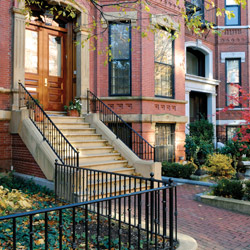
For building owners, saving taxes in 2010 may be as easy as 1-2-3.
1) Repair and Maintenance Deductions
The difference between deductible expenses and capital expenditures can mean thousands of dollars to property owners who perform regular maintenance and repairs. The key question is when certain costs are considered expenses that can be deducted from current income.
Generally, taxpayers are required to capitalize expenditures that:
- Substantially prolong the life of the property
- Materially increase the value of the property
- Adapt property to a new or different use
- “Put” the property into a useful condition.
By contrast, taxpayers may be able to deduct expenditures for:
- Routine maintenance
- Incidental repairs
- Equipment and materials that “keep” the property in an ordinary, efficient operating condition.
In most cases, a taxpayer will pay less tax by classifying an expenditure as a repair and taking the current deduction, rather than capitalizing the expense and recovering the cost through depreciation. Proposed regulations would open the door for building owners to deduct costs formerly capitalized and depreciated in order to reduce their tax liability.
Here’s an example of the subtle difference between repair and maintenance, and capital improvement: The wooden roof shingles on a building are damaged in a storm. Replacing the entire roof so all of the new shingles match would not be considered an improvement to the entire building, and so it would not have to be capitalized. The same would be true if the wood shingles were replaced with asphalt shingles. However, if the building owner decided this would be a good opportunity to upgrade the roof, and instead installed a maintenance-free system with an expected lifespan of 50 years, those expenditures would have to be capitalized as a long-term improvement to the overall building.
Who can benefit?
Many building owners have improperly classified maintenance and repair costs, creating numerous opportunities to go back and reclassify certain expenditures in order to recover previously paid taxes.
To claim the deduction without amending prior returns, the building owner must submit form 3115 to change its accounting method. This request will automatically be approved by the IRS, allowing a catch-up deduction to be taken on the current year’s return for expenditures that occurred many years ago. There is no three-year limitation on the period that is available for reclassifying repairs that were previously capitalized.
2) Cost Segregation
Under IRS guidelines, most buildings constructed, purchased or renovated since 1986 are eligible for a cost segregation study. The goal of such a study is to make sure business owners are using the appropriate depreciable life for their assets. Cost segregation is not a special tax credit. Conducting a cost segregation study simply allows a building owner to reclassify assets and take advantage of any tax savings that may result.
The standard depreciation period for most commercial buildings is 39 years. When facilities are constructed (new or additions), many companies incorrectly use the 39-year depreciable life even though parts of a building should be depreciated at a faster rate (15 years for land improvements and five to seven years for various types of equipment). Many special-use items (floor coverings, machine communications and reinforcements, fixtures, and specialty electrical and HVAC equipment) can use an accelerated depreciation schedule. Qualifying components are identified using architectural drawings, building invoices and other documentation.
The best time to conduct a cost segregation study is in the first year of a building’s life, when it is easier to identify and properly classify building components, although a high-quality study will employ an engineering approach that can identify many items in older buildings that will qualify for shorter depreciable lives.
3) Section 179D Energy Efficiency Deduction
This popular deduction originated in 2005 and was extended through 2013 by the American Recovery and Reinvestment Act. It allows the owner of a commercial building to qualify for deductions of up to $1.80 per square foot for buildings that are constructed or renovated to save on total annual energy costs.
Who qualifies?
The primary beneficiaries of 179D deductions (named for Section 179D of the Internal Revenue Code) are commercial property owners or lessees. This generally includes office buildings, retail space, restaurants, manufacturing facilities, warehouses and certain residential buildings.
Government buildings (such as schools and universities, courthouses, jails and office buildings) may also qualify. However, since government entities do not pay taxes, the deduction can be transferred by written delegation to the designer of the energy-efficient attributes.
Deductions vary with energy savings
Qualified property owners may be able to claim the deduction for buildings that are constructed or renovated to save 50 percent or more on total annual energy costs compared to Standard 90.1-2001 of the American Society of Heating, Refrigeration and Air Conditioning Engineers.
Energy savings must be achieved by constructing or retrofitting any of three building systems—the envelope (exterior walls, floor, roof, doors, windows), interior lighting, or heating, cooling and hot water systems.
If the building does not meet the 50-percent energy savings requirement, it may still qualify for a partial deduction. Special interim rules allow a deduction of up to 60 cents per square foot for a 40-percent reduction in lighting power density. Various other requirements must also be met, but the calculation of this deduction is significantly easier and requires no other energy cost reductions within the building.
Required certification
Before the 179D deduction can be claimed, the property owner must obtain independent certification of energy savings from a qualified, licensed professional engineer or third-party contractor using software qualified by the Department of Energy. In most cases, the cost of this professional certification is significantly recovered by the tax savings generated. iBi
Mark Colvin is a senior manager specializing in federal tax consulting solutions for Clifton Gunderson’s Peoria office. Mark can be reached at Mark.Colvin@cliftoncpa.com or (309) 495-8754.

